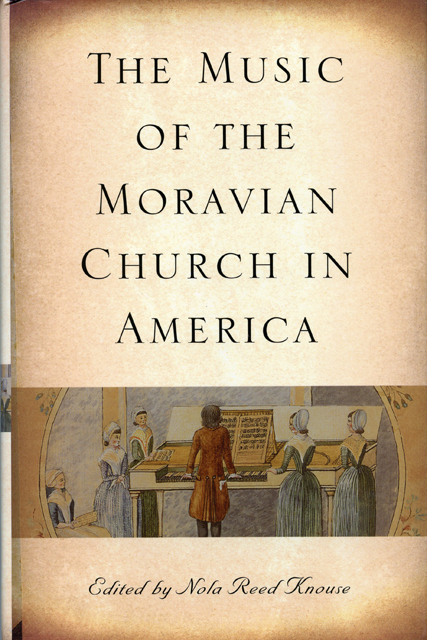Book contents
- Frontmatter
- Contents
- List of Illustrations
- Foreword
- Preface
- Acknowledgments
- 1 The Moravians and Their Music
- 2 Moravian Worship: The Why of Moravian Music
- 3 Hymnody of the Moravian Church
- 4 Moravian Sacred Vocal Music
- 5 The Organ in Moravian Church Music
- 6 The Role and Development of Brass Music in the Moravian Church
- 7 The Collegia Musica: Music of the Community
- 8 Music in Moravian Boarding Schools through the Early Nineteenth Century
- 9 The Piano among the Moravians in the Eighteenth and Nineteenth Centuries: Music, Instruction, and Construction
- 10 Moravian Music: Questions of Identity and Purpose
- Appendix 1 Biographical Sketches
- Appendix 2 A Moravian Musical Timeline
- Bibliography
- List of Contributors
- Index
- Eastman Studies in Music
6 - The Role and Development of Brass Music in the Moravian Church
Published online by Cambridge University Press: 10 March 2023
- Frontmatter
- Contents
- List of Illustrations
- Foreword
- Preface
- Acknowledgments
- 1 The Moravians and Their Music
- 2 Moravian Worship: The Why of Moravian Music
- 3 Hymnody of the Moravian Church
- 4 Moravian Sacred Vocal Music
- 5 The Organ in Moravian Church Music
- 6 The Role and Development of Brass Music in the Moravian Church
- 7 The Collegia Musica: Music of the Community
- 8 Music in Moravian Boarding Schools through the Early Nineteenth Century
- 9 The Piano among the Moravians in the Eighteenth and Nineteenth Centuries: Music, Instruction, and Construction
- 10 Moravian Music: Questions of Identity and Purpose
- Appendix 1 Biographical Sketches
- Appendix 2 A Moravian Musical Timeline
- Bibliography
- List of Contributors
- Index
- Eastman Studies in Music
Summary
One Saturday evening in 1760, a young German man named Johann Heinrich Danke was working in the fields on a farm located a mile or so south of the Moravian community of Zeist in the Netherlands. In the distance, Danke heard music; trombones were playing a familiar German tune. When he asked the farmer about the music, the farmer responded, “That is in Zeist with the Herrnhuters.” Danke had never heard about the “Herrnhuters,” and the farmer did not have a high opinion of them. But when he had the chance, Danke visited Zeist. The worship service he attended there made such an impression that he left his job and joined the Moravians. In 1768 Danke was sent as a Moravian missionary to Egypt. His experience of Moravian music was enough to draw him into the Moravian community.
The Beginnings of Moravian Brass Music
The earliest reference to the use of brass instruments in Moravian worship dates from 1729. In his written account of Herrnhut from about 1729, Christian David describes in the chapter about the celebration of Sunday that, at the end of the day, the congregation assembled in the meeting hall in the Herrnhut Gemeinhaus:
Then the congregation comes together, and the brothers from Berthelsdorf join us. First about three hymns are sung, accompanied by the organ, and the French horns are played. Then the Count [Zinzendorf] takes a verse from the Bible and gives a sermon about it. Finally this meeting, which is over around 7 o’clock, is closed with a prayer.
The next known reference to horn players in the early Herrnhut records dates from April 1, 1731, when the congregational council discussed if the horn players should be paid for their services. Hans Raschke, who was one of those musicians, protested and said they would play for free. Apparently, by that time music in Herrnhut was becoming more organized. During this same meeting, the congregational council considered the formation of a collegium musicum. It was proposed that the collegium musicum should be held in the local inn every day. With 52 yeas and no nays, the proposal was approved, and it was noted that “the whole congregation is pleased.”
- Type
- Chapter
- Information
- The Music of the Moravian Church in America , pp. 169 - 188Publisher: Boydell & BrewerPrint publication year: 2009



